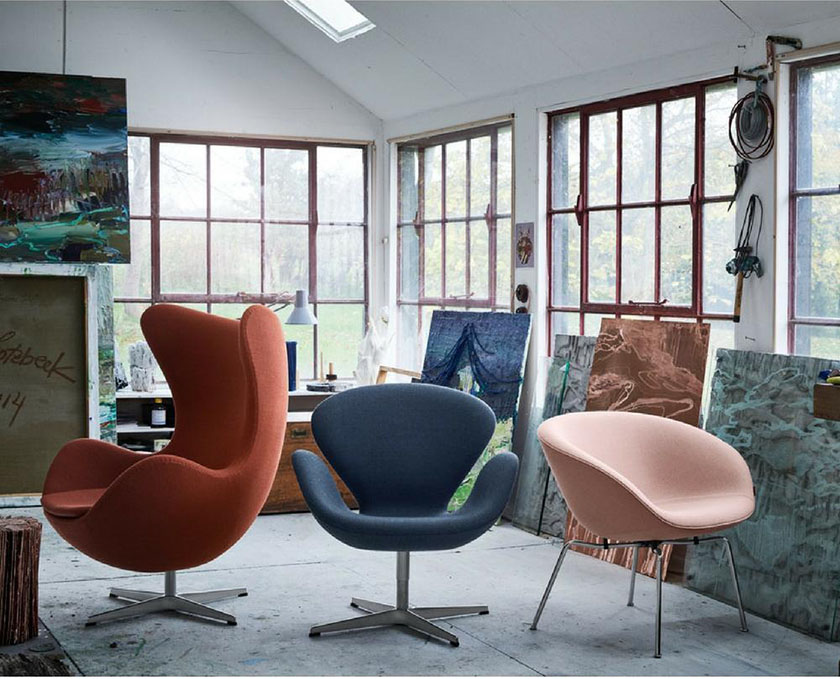
Curves, curves and more curves! Arne Jacobsen originally designed these chairs for the common area within the Royal Hotel in Copenhagen. Image courtesy of Palette and Parlor
Turning 60 is a big deal… and so it’s only fitting that Fritz Hansen decided it was due time to celebrate the iconic trio of chairs with a limited edition collection that’s sure to sell out. We especially love the fact that these chairs, which were first presented in 1958, are getting a resurgence.
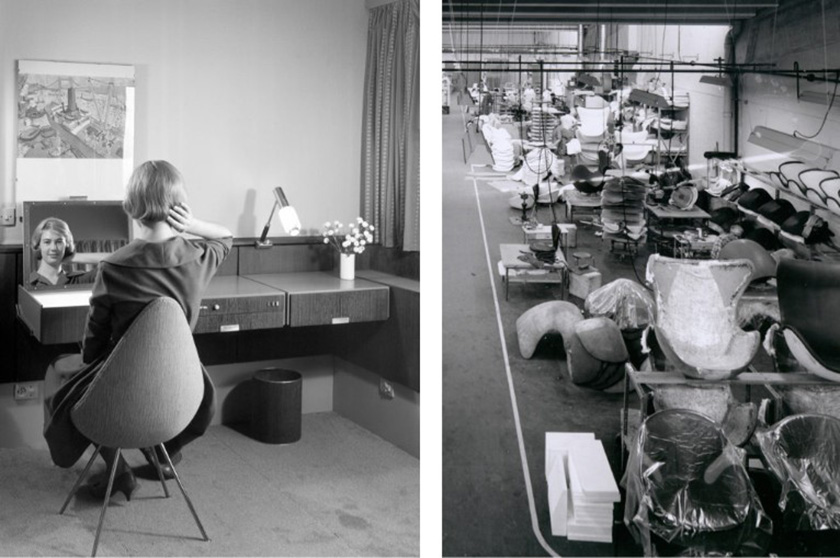
Left- The Drop chair in a guest room at the SAS Royal Hotel (image courtesy of: Jørgen Strewing). Right- The Egg and Swan chairs at the Fritz Hansen factor in 1963. Image courtesy of Surface Magazine
The original idea was to add a little bit of feminine style to the rigid SAS Royal Hotel (renamed the Radisson Blu Royal Hotel) in Copenhagen. Jacobsen was interested in designing something that made the people who sat in his chairs look beautiful. And as an architect, Jacobsen was quite interested in the “scientific” part of his work.
Within the hotel’s original lobby, the Egg chair encompassed its visitor and the Swan chair opened it’s arms to its visitor. The smaller-scale Drop chair was placed in the guest rooms and the restaurant area. Andersen was quoted as saying about the Drop chair which was perfect for his wife, “Instead of enclosing the individual, it points to and accentuates her.”
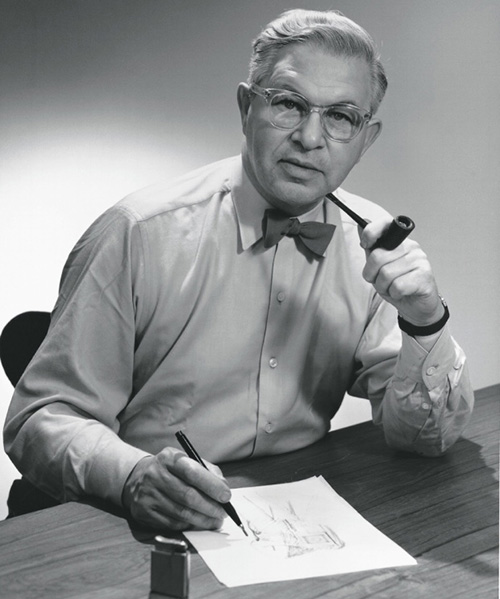
Arne Jacobsen originally began his training as a mason, before enrolling in Copenhagen’s Royal Danish Academy of Fine Arts. Image courtesy of Design Within Reach
So in celebration of #60… a limited production of 1,958 Egg and Swan chairs are being reupholstered in “pure” leather. This leather has never been water-treated or dyed and maintains the hide’s natural grain and color, which clearly darkens with use and exposure to sunlight. Each piece is 100% unique, numbered, and includes a handwritten card which details all of it’s “blemishes”. The Drop chair will also be available this year (and this year only) and is upholstered with a durable taupe-hued fabric that’s rich in color. The Egg, Swan and Drop chairs all have 4-star aluminum bases, electroplated in 23-katat cold that’ll age gracefully over time.
All these updates were done in collaboration with Jacobsen’s family. The two entities have worked together since the designer’s death in 1971. Fritz Hansen and the Jacobsen family recently enhanced their connection through Jacobsen’s grandson, Tobias. The young Jacobsen studied design at the Royal Danish Academy of Fine Arts, following in his grandfather’s footsteps.
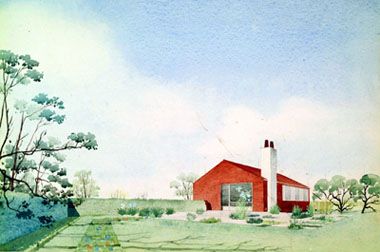
From the 1940’s, Jacobsen’s watercolor sketch for a Danish single-family home. Image courtesy of Phaidon
Always the diligent gardner, Jacobsen spent the first part of his career designing homes and gardens for Denmark’s growing suburbs. Built to accompany the development of Denmark’s highway system, these homes were quite modest. Nevertheless, this project allowed Jacobsen to develop his techniques for fusing together the natural world.
With Jacobsen, homes were reduced in size to their most basic and minimalistic forms. Decorations and other “obstructions” were removed to allow for as much natural light and outdoor views as possible. Within just a few years, the house and garden were considered one and the same.
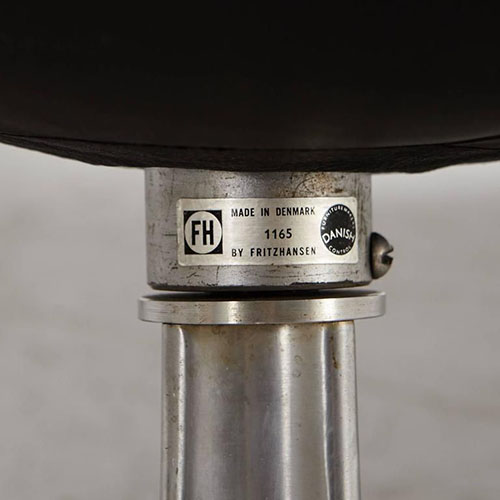
A label on an Egg Chair helps confirm authenticity and date. Fritz Hansen has used different tags and stickers throughout the years, but the idea remains the same! Image courtesy of The Spruce
Jacobsen’s career was put on hold when he was forced to flee Denmark at the start of World War II. Similar to other Danish citizen, Jacobsen went across the border to Sweden, where he spent two years in order to avoid Nazi rule and transportation to a concentration camp.
Jacobsen was unique in that he was also considered an architect and a gardener; however today, most of us know Jacobsen as a designer… a word he is said to have notoriously disliked. His important contribution to modernism helped cement the idea that the “movement” came from Scandinavian countries.